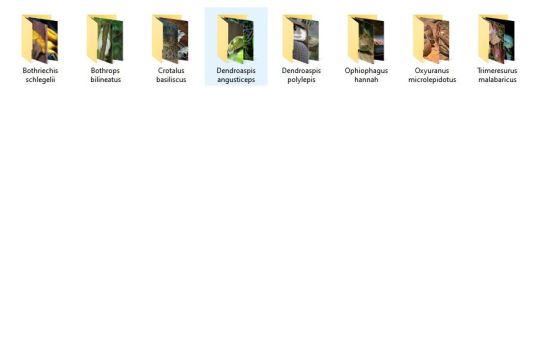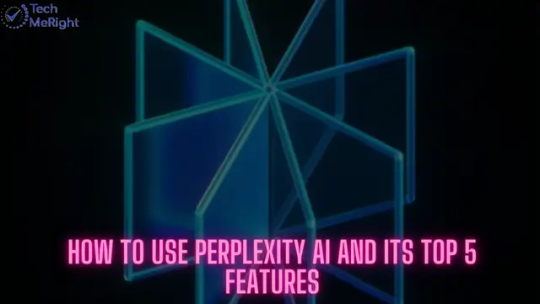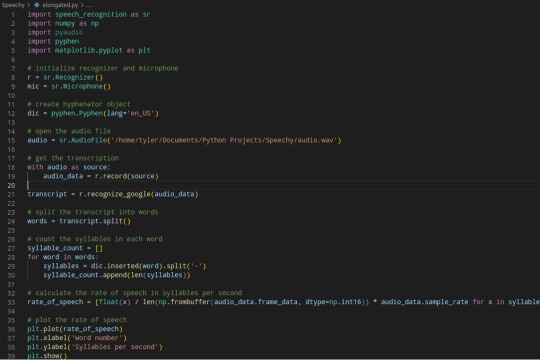#data science process
Link
#Data Labeling 2023#Current trends data labeling 2023#data science process#Cogito#AI#machine learning#2023
0 notes
Text

Tonight I am hunting down venomous and nonvenomous snake pictures that are under the creative commons of specific breeds in order to create one of the most advanced, in depth datasets of different venomous and nonvenomous snakes as well as a test set that will include snakes from both sides of all species. I love snakes a lot and really, all reptiles. It is definitely tedious work, as I have to make sure each picture is cleared before I can use it (ethically), but I am making a lot of progress! I have species such as the King Cobra, Inland Taipan, and Eyelash Pit Viper among just a few! Wikimedia Commons has been a huge help!
I'm super excited.
Hope your nights are going good. I am still not feeling good but jamming + virtual snake hunting is keeping me busy!
#programming#data science#data scientist#data analysis#neural networks#image processing#artificial intelligence#machine learning#snakes#snake#reptiles#reptile#herpetology#animals#biology#science#programming project#dataset#kaggle#coding
40 notes
·
View notes
Text


Irene and Stanley Attempt Data Analytics by Hand
#post#doodles#irene#Sucks that this doesnt fit the platform it was intended to be in#Also umm im not arguing about semantics of stat vs data science/analytics whatever on a joke comic#Had to reupload because i was like ughhhhh fuck off i know I drew a statistical process Fuck this nerd shit.#mom i want stanley narrator /n the stanley narrator we have at home#comix
61 notes
·
View notes
Text
So deep in the methodology section that the next time someone even mention the word causal inference I am going to start chewing on their laptop without any explanation.
#thesis writing#haha NO#I love you philosophy of science ! ontology and epistemology !#i love you set theory !#but when I have to devote a full section to explain what process tracing is#justify every single aspect of case selection#and detail all my data sources like I actually sat down listes them at any point#I turn THIS CLOSE to feral#This is why we can't have nice things AAAAAAAAAAAAAAAAAA
27 notes
·
View notes
Text
Hey, Batfans, are you a weird completionist who likes sortable data way too much, like me? Do you want a giant spreadsheet of appearances of a bunch of Batfam members that you can filter across multiple people to see where they show up in the same issue together?
WELL GOOD NEWS because thanks to my hyperfixation I made a spreadsheet. (It's view-only but if you save a copy it should be editable for personal use.)
The Spreadsheet currently contains all post-crisis appearances for the following characters: Barbara Gordon, Cassandra Cain, Damian Wayne, Dick Grayson, Duke Thomas, Harper Row, Helena Bertinelli, Jace Fox, Jarro, Jason Todd, Jean-Paul Valley, Kate Kane, Luke Fox, Stephanie Brown and Tim Drake. I feel like that's most of the big ones (and several not-very-big-ones), but if there's a Bat-person missing you'd like to see on there, feel free to ask!
This is up to date through July 2023. I have intentions to keep updating it on a semi-monthly basis, but we'll see if that happens.
All sheets are conditionally formatted so if you enter "Y" in the Read column it will highlight the whole row in green to mark it off, if you're the kind of person who likes to keep track and mark things off a list.
The Master List is filterable by any character, and more importantly, multiple characters! Up to "all of them" although I don't think anything actually contains *all* of them.
(Some more notes below)
SOME NOTES:
Dates are the start of the series, since that's how a lot of places besides DC itself with their weird "volume" convention distinguish different runs.
These aren't sorted by preboot vs. New 52 vs. Rebirth vs. IF, sorry, that was too many sorting functions for now. You can kinda figure it out by date, though (New 52 was 2011, Rebirth was 2016, IF was 2022) or look up the issue on a wiki and see what version of the character is tagged.
On that note, all of this was pulled from the DC Wiki, and while I did a little bit of spot-checking as I went for things I knew off the top of my head it's entirely possible things are missing or mis-attributed. I'm happy to update accordingly if there are.
Similarly, I didn't go through every issue here to check what role people are appearing in, either in terms of what identity they're using (e.g. Spoiler vs Robin vs Batgirl) or if they're a major character or not. Some of these are as minor as background appearances or off-screen mentions. Some day I might add more metadata to sort for those things, but right now that's not part of it.
#batfam#comics#comics list#why yes i am a professional science person who spends way too much time sorting and processing data why do you ask
14 notes
·
View notes
Text
Anyone good at data analysis pls give me tips on how to explain the process for an interview bc literally I black out for 6 hours and when I come to the analysis is done and I don't remember how I did anything. This is not something interviewers want to hear.
#wrenfea.exe#my methods are also specific to the language/program im using to analyze the data#so when they ask what my process is my brain gets overwhelmed#it doesn't help that im very rusty on the programming front#i have been relearning R but not fast enough#natural science#scienceblr#datascience#data analysis#also i have bad experiences with statistics as i had an extremely ableist professor#if you have any videos or book reccs pls feel free to link them#i already have statistics for the terrified biologist
4 notes
·
View notes
Text
How To Use Perplexity AI And Its Top 5 Features
Perplexity AI makes use of artificial intelligence to help users locate and retrieve information, doing away with the need for tiresome hours spent searching the internet and viewing sites.
In contrast to well-known AI chatbots such as ChatGPT, Perplexity serves as a real-time internet search engine that looks up answers to user inquiries.Perplexity can respond to a variety of questions, offer…

View On WordPress
#AI Applications#ai usage#Artificial Intelligence#Data Science#natural language processing#perplexity ai#smart tech#technology blog
2 notes
·
View notes
Text
definitely love to meet with my advisor a week before my capstone project is due and have it become clear that he did not read the 3800 word partial draft i sent him two weeks ago and is instead still referring to an outline i wrote in october. definitely makes me feel that he knows what i am doing and what my project is and how to help me
#the social sciences are so silly i must say#three divergent methodologies in a trenchcoat trying to be a real discipline#him: describe the data gathering process! attach a spreadsheet of your data in an appendix!#me: so this project is more theoretical now? i'm citing sadiya hartman to propose new approaches to [redacted]?#rare pic of me in the wild
2 notes
·
View notes
Text
Cosine Similarity; For checking similarity of documents, etc.
Cosine similarity is a measure of checking the similarity between two documents, texts, strings, etc.
It does so by representing the query as vectors in n-dimensional space. It then measures the angle between these vectors and gives the similarity based on the cosine of this angle.
If the queries are completely similar the angle will be zero; Thus the cosine similarity will be:
> cos(angle_between_the _vectors)=cos(0)= 1
If the queries are completely dissimilar the vectors will be perpendicular; Thus the cosine similarity will be:
> cos(angle_between_the _vectors)=cos(90)= 0
If the queries are completely opposite the vectors will be opposite to each other; Thus the cosine similarity will be:
> cos(angle_between_the _vectors)=cos(180)= -1
The cosine similarity, mathematically, is given by:

Let's see an example:
Doc1 = "this is the first document"
Doc2 = "this document is second in this order"
Vector representation of these documents:
Doc1 = [1,1,1,0,1,1,0,0]
Doc2 = [1,0,1,1,1,2,1,1]

ΣAiBi = (1*1)+(1*0)+(0*1)+(1*1)+(0*1)+(0*1)+(1*0)+(1*2)
= 4
√(ΣAi)^2 = √(1+1+0+1+0+0+1+1)
= √5
√(ΣBi)^2 = √(1+0+1+1+1+1+0+4)
= √9
Cosine similarity = 4/(√5*√9)
= 0.59
The Cosine Similarity is a better metric than Euclidean distance because if the two text document far apart by Euclidean distance, there are still chances that they are close to each other in terms of their context.
#NLP#cosine#cosine similarity#natural language#natural language processing#computer#computer science#language#computer language#euclidean#euclidean distance#maths#vectors#data analytics#big data#artificial intelligence#data analysis#AI#openAI#chatGPT#data mining#business intelligence
12 notes
·
View notes
Text
looking for studyblrs / blogs
leave a message if you post about
deep learning applications specifically for NLP
deep reinforcement learning
data science and data analytics
regression models
tensorflow
computational linguistics (bonus if it's about emergent languages)
practical ethics of cognitive science applications
cognitive neuropsychology
or if you are just cool in general <3
Will leave a follow in return! I need new active blogs to follow
#studyblr#data science#natural language processing#artificial intelligence#cognitive science#deep learning#computational linguistics#ethics#neuropsychology#tarastudiesalot#stemblr#women in stem
30 notes
·
View notes
Text
11 notes
·
View notes
Text
someone needs to bully me into working on my thesis
#for some reason it’s so much easier to force#myself to get up and do an experiment#than to force myself to face the data analysis and writing#even tho the data analysis is the part that’s actually interesting#but alas i cannot do an experiment right now because we fucking ran out of toluene.#AND [other chemical i’m working with that someone in another lab has to make for us]#i can’t even bug my PI with my incessant questions bc she’s not here. probably busy with meetings or something. i sent her an email.#who knows when she’ll respond#not that she ever answers my questions anyway!!! she’s always like ‘well what do you think?’#ik she’s doing it to build my confidence and bc she trusts my judgement but it’s kind of infuriating sometimes#anyway all this to say it’s just me vs. my word doc#plus a mountain of disorganized .txt files and even more disorganized corresponding .csv files#several google sheets#a handful of unprocessed FTIR spectra that theoretically i should know how to process and analyze (but really i haven’t the faintest clue)#and my reasonably well-organized lab notebook which somehow still feels like a nightmare to navigate because it’s in chronological order#and not organized by type of experiment#i do love my mad scientist job but sometimes it just feels like too many things#also surface science is not really my passion and i’m looking forward to doing something different in grad school#screams into the void
1 note
·
View note
Text
Analyzing An Ataxic Dysarthria Patient's Speech with Computer Vision and Audio Processing
Hey everyone, so as you know I have been doing research on patients like myself who have Ataxic Dysarthria and other neurological speech disorders related to diseases and conditions that affect the brain. I was analyzing this file
with a few programs that I have written.
The findings are very informative and I am excited that I am able to explain this to my Tumblr following as I feel it not only promotes awareness but provides an understanding of what we go through with Ataxic Dysarthria.
Analysis of the audio file with an Intonation Visualizer I built

As you can tell this uses a heatmap to visualize loudness and softness of a speaker's voice. I used it to analyze the file and I found some really interesting and telling signs of Ataxic Dysarthria

At 0-1 seconds it is mostly pretty quiet (which is normal because it is harder for patients with AD to start their speaking off. You can notice that around 1-3 seconds it gets louder, and then when she speaks its clearer and louder than the patients voice. However the AD makes the patients speech constantly rise and fall in loudness from around -3 to 0 decibels most of the audio when the patient is speaking. The variation though between 0 and -3 varies quickly though which is a common characteristic in AD
The combination of the constant rising and falling in loudness and intonation as well as problems getting sentences started is one of the things that makes it so hard for people to understand those with Ataxic Dysarthria.
The second method I used is using a line graph (plotted) that gives an example of the rate of speech and elongated syllables of the patient.

As you can see I primarily used the Google Speech Recognition library to transcribe and count the syllables using Pyphen via "hyphenated" (elongated) words in the speech of the patient. This isn't the most effective method but it worked well for this example and here is the results plotted out using Matplotlib:

As you can see when they started talking at first there was a rise from the softer speech, as the voice of the patient got louder, they were speaking faster (common for those with AD / and HD) my hypothesis (and personal experience) is that this is how we try to get our words out where we can be understood by "forcing" out words resulting in a rise and fall of syllables / rate of speech that we see at the first part. The other spikes typically happen when she speaks but there is another spike at the end which you can see as well when the patient tries to force more words out.
This research already indicates a pretty clear pattern what is going on in the patients speech. As they try to force out words, their speech gets faster and thus gets louder as they try to communicate.
I hope this has been informative for those who don't know much about speech pathology or neurological diseases. I know it's already showing a lot of exciting progress and I am continuing to develop scripts to further research on this subject so maybe we can all understand neurological speech disorders better.
As I said, I will be posting my research and findings as I go. Thank you for following me and keeping up with my posts!
#research#medical research#medical technology#speech pathology#speech disorder#neurology#ataxic dysarthria#ataxia#machine learning#artificial intelligence#ai#computer vision#audio processing#audio engineering#data analysis#data analyst#data science#python 3#python programming#python programmer#python code
38 notes
·
View notes
Text
Everything You Need to Know About Machine Learning
Ready to step into the world of possibilities with machine learning? Learn all about machine learning and its cutting-edge technology. From what do you need to learn before using it to where it is applicable and their types, join us as we reveal the secrets. Read along for everything you need to know about Machine Learning!

What is Machine Learning?
Machine Learning is a field of study within artificial intelligence (AI) that concentrates on creating algorithms and models which enable computers to learn from data and make predictions or decisions without being explicitly programmed. The process involves training a computer system using copious amounts of data to identify patterns, extract valuable information, and make precise predictions or decisions.
Fundamentally, machine Learning relies on statistical techniques and algorithms to analyze data and discover patterns or connections. These algorithms utilize mathematical models to process and interpret data. Revealing significant insights that can be utilized across various applications by different AI ML services.
What do you need to know for Machine Learning?
You can explore the exciting world of machine learning without being an expert mathematician or computer scientist. However, a basic understanding of statistics, programming, and data manipulation will benefit you. Machine learning involves exploring patterns in data, making predictions, and automating tasks.
It has the potential to revolutionize industries. Moreover, it can improve healthcare and enhance our daily lives. Whether you are a beginner or a seasoned professional embracing machine learning can unlock numerous opportunities and empower you to solve complex problems with intelligent algorithms.
Types of Machine Learning
Let’s learn all about machine learning and know about its types.
Supervised Learning
Supervised learning resembles having a wise mentor guiding you every step of the way. In this approach, a machine learning model is trained using labeled data wherein the desired outcome is already known.
The model gains knowledge from these provided examples and can accurately predict or classify new, unseen data. It serves as a highly effective tool for tasks such as detecting spam, analyzing sentiment, and recognizing images.
Unsupervised Learning
In the realm of unsupervised learning, machines are granted the autonomy to explore and unveil patterns independently. This methodology mainly operates with unlabeled data, where models strive to unearth concealed structures or relationships within the information.
It can be likened to solving a puzzle without prior knowledge of what the final image should depict. Unsupervised learning finds frequent application in diverse areas such as clustering, anomaly detection, and recommendation systems.
Reinforcement Learning
Reinforcement learning draws inspiration from the way humans learn through trial and error. In this approach, a machine learning model interacts with an environment and acquires knowledge to make decisions based on positive or negative feedback, referred to as rewards.
It's akin to teaching a dog new tricks by rewarding good behavior. Reinforcement learning finds extensive applications in areas such as robotics, game playing, and autonomous vehicles.
Machine Learning Process
Now that the different types of machine learning have been explained, we can delve into understanding the encompassing process involved.
To begin with, one must gather and prepare the appropriate data. High-quality data is the foundation of any triumph in a machine learning project.
Afterward, one should proceed by selecting an appropriate algorithm or model that aligns with their specific task and data type. It is worth noting that the market offers a myriad of algorithms, each possessing unique strengths and weaknesses.
Next, the machine goes through the training phase. The model learns from making adjustments to its internal parameters and labeled data. This helps in minimizing errors and improves its accuracy.
Evaluation of the machine’s performance is a significant step. It helps assess machines' ability to generalize new and unforeseen data. Different types of metrics are used for the assessment. It includes measuring accuracy, recall, precision, and other performance indicators.
The last step is to test the machine for real word scenario predictions and decision-making. This is where we get the result of our investment. It helps automate the process, make accurate forecasts, and offer valuable insights. Using the same way. RedBixbite offers solutions like DOCBrains, Orionzi, SmileeBrains, and E-Governance for industries like agriculture, manufacturing, banking and finance, healthcare, public sector and government, travel transportation and logistics, and retail and consumer goods.
Applications of Machine Learning
Do you want to know all about machine learning? Then you should know where it is applicable.
Natural Language Processing (NLP)- One area where machine learning significantly impacts is Natural Language Processing (NLP). It enables various applications like language translation, sentiment analysis, chatbots, and voice assistants. Using the prowess of machine learning, NLP systems can continuously learn and adapt to enhance their understanding of human language over time.
Computer Vision- Computer Vision presents an intriguing application of machine learning. It involves training computers to interpret and comprehend visual information, encompassing images and videos. By utilizing machine learning algorithms, computers gain the capability to identify objects, faces, and gestures, resulting in the development of applications like facial recognition, object detection, and autonomous vehicles.
Recommendation Systems- Recommendation systems have become an essential part of our everyday lives, with machine learning playing a crucial role in their development. These systems carefully analyze user preferences, behaviors, and patterns to offer personalized recommendations spanning various domains like movies, music, e-commerce products, and news articles.
Fraud Detection- Fraud detection poses a critical concern for businesses. In this realm, machine learning has emerged as a game-changer. By meticulously analyzing vast amounts of data and swiftly detecting anomalies, machine learning models can identify fraudulent activities in real-time.
Healthcare- Machine learning has also made great progress in the healthcare sector. It has helped doctors and healthcare professionals make precise and timely decisions by diagnosing diseases and predicting patient outcomes. Through the analysis of patient data, machine learning algorithms can detect patterns and anticipate possible health risks, ultimately resulting in early interventions and enhanced patient care.
In today's fast-paced technological landscape, the field of artificial intelligence (AI) has emerged as a groundbreaking force, revolutionizing various industries. As a specialized AI development company, our expertise lies in machine learning—a subset of AI that entails creating systems capable of learning and making predictions or decisions without explicit programming.
Machine learning's widespread applications across multiple domains have transformed businesses' operations and significantly enhanced overall efficiency.
#ai/ml#ai#artificial intelligence#machine learning#ai development#ai developers#data science#technology#data analytics#data scientist#data processing
3 notes
·
View notes
Text
The latest trends and innovations in artificial intelligence
How AI is transforming the world and what it means for you
The question of whether a computer can think is no more interesting than the question of whether a submarine can swim.— Edsger W. Dijkstra
Artificial intelligence (AI) is one of the most exciting and rapidly evolving fields of technology today. From self-driving cars to smart assistants, AI is changing the way we live, work, and play.…

View On WordPress
#AI applications#AI impact#AI innovations#AI trends#artificial intelligence#computer vision#dailyprompt#dailyprompt-1917#data science#deep learning#machine learning#natural language processing#neural networks#robotics
3 notes
·
View notes